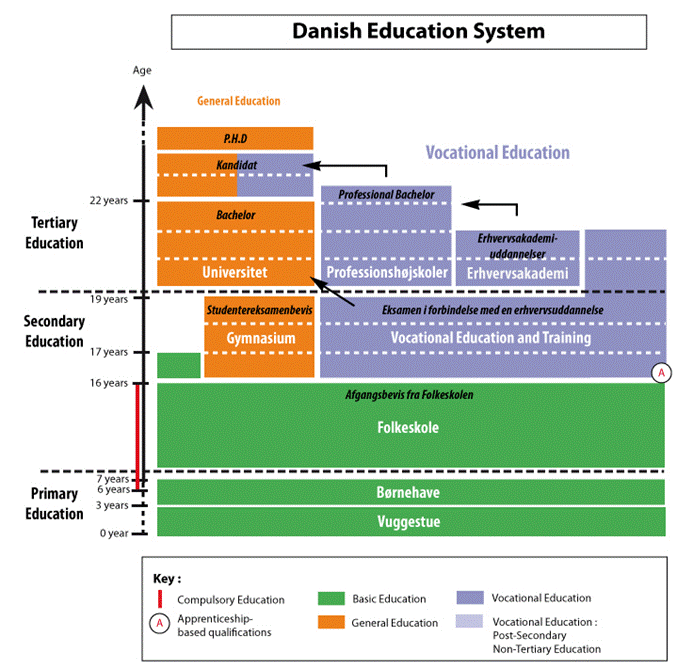Education
In Denmark education is compulsory for children below the age of 15 or 16. It is however not compulsory to attend a public (folkeskole) or private school. In some cases children are being homeschooled. It could be children with special needs or social problems. But they must end up with the same educational level as children attending school.
After grade 0-9 (elementary and lower secondary) they must choose a youth education. It can be 1) 10th grade, 2) vocational school, 3) gymnasium (high school). Only gymnasium opens the doors to college and university.
10th grade:
After 9 years of compulsory school, students can choose an extra year to become more mature, get better grades and get ready for further education, such as high school (gymnasium) or at a vocational school. Students will improve academically, personally and/or socially.
Vocational school:
Practical training in a company alternates with teaching at a vocational school, in the Danish vocational education and training programmes (I-VET). They consist of two basics and one main programme. The students can either start with the first basic programme (GF 1) or they can start with practical training if they have a signed agreement with a company.
Gymnasium (high school):
There are four different programmes:
1) General education (STX),
2) Short general education (HF),
3) Business education (HHX) and
4) Technical education (HTX).
They all (if passed) qualifies for further higher education.
You can find more information here: http://studyindenmark.dk/study-options/find-your-international-study-programme

Admission
If you are a citizen from another EU/EEA country, you have the same rights as Danish students according to admission to education.
If you have an education from overseas and wishes to use it in Denmark, the Danish Agency for Higher Education will value it.
To read more: http://studyindenmark.dk/study-options/admission-requirements